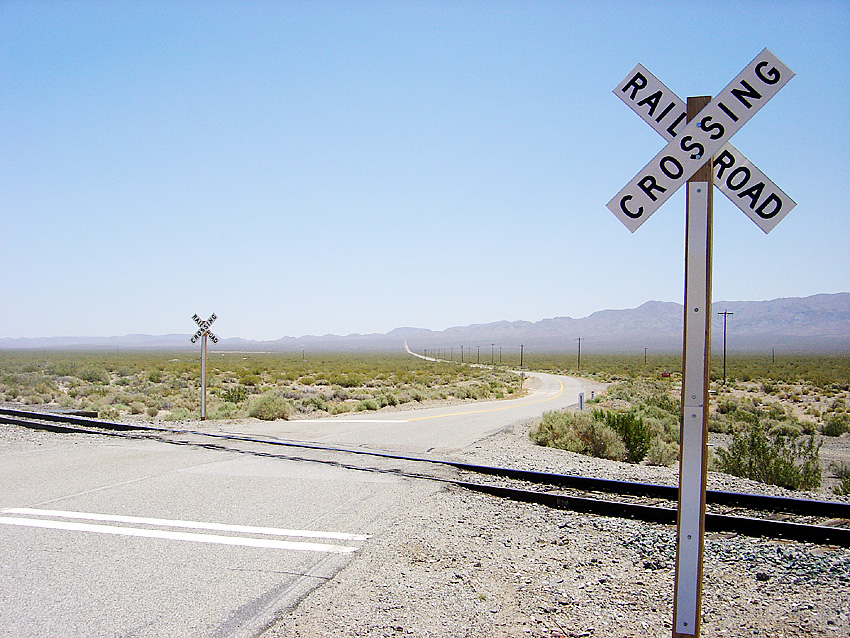Occupied Crossings
With more than 27,000 grade crossings in Texas, railroads work closely with community leaders, government partners, first responders and the public to manage and mitigate the impact of rail crossings on communities.
Each railroad crossing is different. Railroads work closely with their own operational teams, community leaders, government partners, first responders and the public to manage and mitigate grade crossing impacts on communities. There is no one-size-fits-all approach to managing crossings.
Railroads minimize the frequency of blocked crossings — and respond when crossings are blocked — by deploying operational procedures that are appropriate to the situation. These operational procedures include:
- Planning train schedules, inbound and outbound yard movements, and crew work schedules that result in minimizing the time a train occupies a grade crossing.
- Modifying railcar-switching practices and operations such as stopping a train clear of a crossing to conduct legally required mechanical inspections.
- Extending sidings and constructing new ones where trains can be stationed, resulting in fewer blocking crossings.
- Holding trains outside of crossings where vehicular traffic is substantial.
- Seeking to park trains outside of crossings when the crews have worked the maximum hours permitted.
- Considering the potential for blocked crossings on sidings when trains are meeting.
- Training dispatchers to optimize the utilization of sidings, meeting and passing opportunities, and stopping points, resulting in fewer blocked crossings.
- Issuing orders across all Class I railroads that require train crews to minimize the occurrence of blocked crossings and to cut crossings where appropriate.
- Requiring crews to alert dispatchers when crossings are blocked and giving the dispatchers the authority to address the blocked crossing.
- Testing notification systems at crossings that notify dispatchers when crossings are blocked.
- Utilizing toll-free telephone numbers for the public to report blocked crossings, with some railroads providing a website reporting option.
Railroads collaborate with partners to identify crossings that can be consolidated, upgraded or closed.
Railroads invest heavily to minimize the effects of grade crossings on local communities, spending hundreds of millions of dollars each year to maintain crossings and enhance sidings; developing public service campaigns and educational resources addressing grade-crossing safety; and investing in new technologies. Ultimately, the most effective way to prevent crossing impacts is to reduce the number of crossings along the rail network. Railroads work with local road authorities, private property owners, TxDOT, and the U.S. Department of Transportation to identify crossings that can be consolidated, upgraded or closed. Since 2005, the total number of public crossings in the U.S. has declined by 15%.
As business and residential development continue, railroads work with local planning authorities to help carefully plan new infrastructure developments to limit community interaction with railroad activities while allowing the continued operation of the railroad corridor itself. Additionally, railroads partner with local and state government to improve alternate access for roadway users, such as new grade separations. There are many opportunities for communities with heavily-used rail crossings to partner with railroads and apply for Federal grant monies to address projects like these.
While railroads strive to minimize the time trains occupy crossings, delays may occur for a variety of reasons, including:
- Unplanned events such as weather-related track blockages, signaling malfunctions, equipment failures or federally required mechanical inspections on the rail network.
- Switching (moving rail cars between tracks, adding or removing cars from a train, or moving rail cars into and out of a customer’s facility), which must occur for a customer to receive traffic.
- Trains slowing to enter or depart yards near crossings.
- Trains operating under reduced speed restrictions such as during track maintenance or slowing in approach to a moveable bridge open for water traffic.
- Vandalism of rail signals or tracks, the presence of trespassers on rail tracks, or emergency response activity near the tracks that require trains to stop.
- Trains held due to passenger or other freight rail traffic.
Railroads collaborate with communities to communicate about and manage crossing impacts.
Nothing is more important to railroads than the safety of their employees and the communities where they operate. By listening to the feedback from communities — and working directly with first responders — railroads can better identify problem areas and determine how best to manage them.
- Phone Numbers at Every Crossing: Every crossing has a 24/7 emergency phone number and an identification number so callers can immediately communicate issues with the railroad. Using this caller information, railroads coordinate with communities to identify workable short- and long-term solutions to mitigate crossing impacts. Some railroads also provide real-time information about a currently occupied crossing and an estimated time for when it may be resolved.
- Advanced Warning Technology: The freight rail industry embraces technology that enhances safety and efficiency. Railroads are partnering with technology companies to develop digital signs that let the public know when a train is occupying a crossing so they can choose another route in advance. “Estimated Wait Time” signs are already in use in some areas, and that information also helps emergency response dispatchers direct resources around the occupied crossing.
- Operation Lifesaver: The freight rail industry wants to reduce blocked crossings caused by trespassers on the tracks or car-train collisions. The railroads have partnered with the non-profit organization Operation Lifesaver to sponsor programs in more than 40 states to educate communities about safety around rail-highway grade crossings. Operation Lifesaver works with the U.S. Department of Transportation each year to raise awareness, including during Rail Safety Week.
- Grade Crossing Elimination: Thanks to funding available via the Bipartisan Infrastructure Law, hundreds of millions of dollars are available to communities across Texas who wish to pursue grade crossing projects. Texas' railroads are eager to partner with state and local entities to separate road-rail intersections, rehabilitate dilapidated crossings, or secure transportation planning monies.

|

